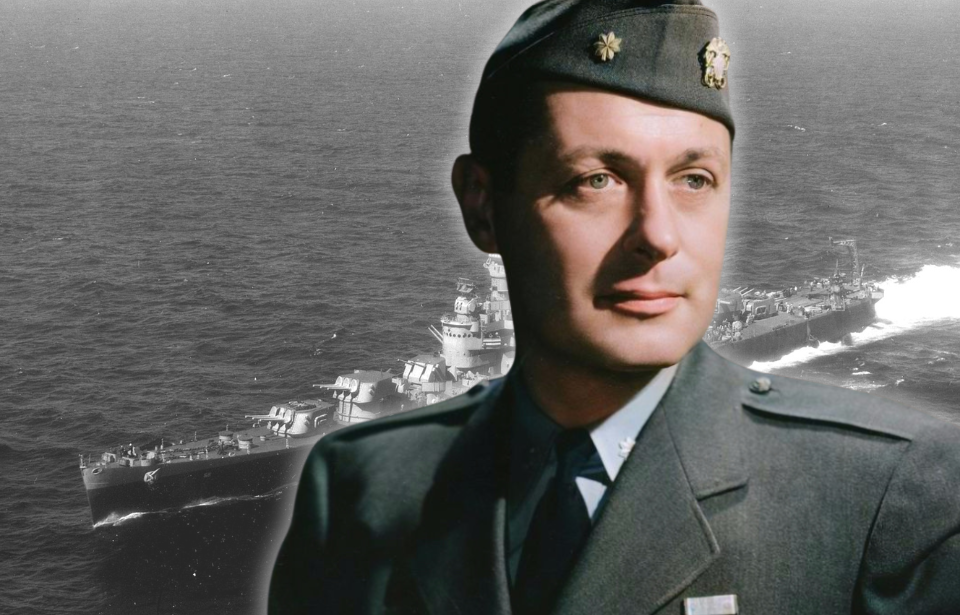Robert Montgomery wasn’t just an influential figure in Vintage Hollywood, he was also a dedicated member of the US military. He put his acting career on hold during the Second World War, serving with the US Navy in the European and Pacific Theaters. His dedicated service saw him afforded a number of decorations and the admiration of both the American public and his peers.
Robert Montgomery’s early life
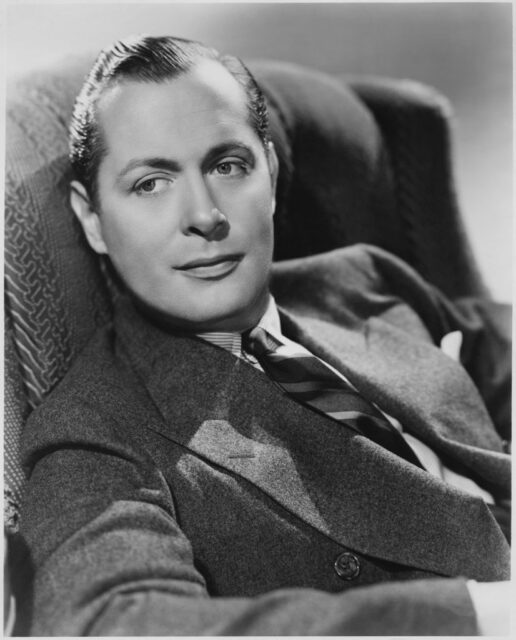
Robert Montgomery was born on May 21, 1904, in Fishkill Landing (now Beacon), New York. His family suffered a great tragedy some 18 years later, when his father, the president of New York Rubber Company, jumped off of the Brooklyn Bridge, distraught at having lost the family’s money.
When he came of age, Montgomery relocated to New York City to pursue a life of acting and writing. Before long, he’d established himself on the stage, with his prowess eventually securing him a contract with Metro-Goldwyn-Mayer (MGM) in Hollywood. Soon after, he made his on-screen debut in 1929’s So This Is College.
Making a name for himself in Hollywood
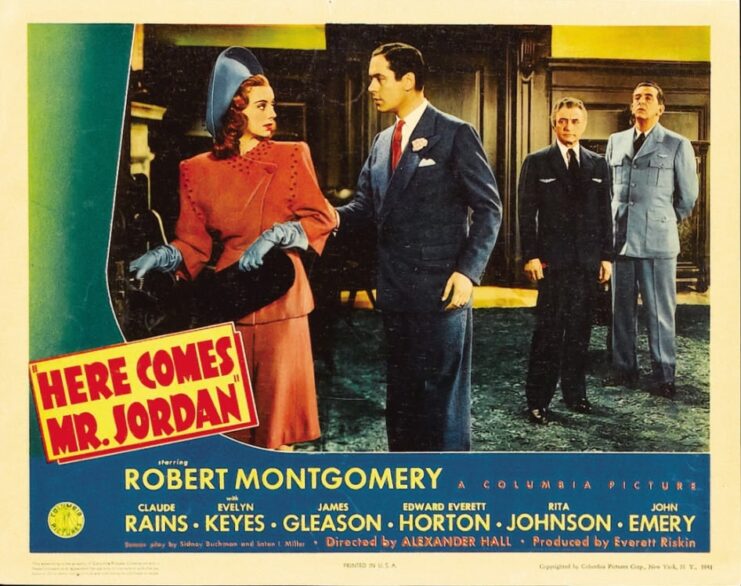
During the early stages of his Hollywood career, MGM kept Robert Montgomery’s credits to solely comedic roles, with the studio apprehensive when he took a more serious part in 1930’s The Big House. His acting in the film was well-received, showing others in the industry that he was more than a one-trick pony.
The same year The Big House came out, Montgomery starred alongside Greta Garbo in Inspiration, after which he appeared with Norma Shearer in a handful of releases. By 1935, he’d been named the president of the Screen Actors Guild, a role he’d reassume in ’47, and two years later appeared in Night Must Fall, a film that earned him an Oscar nomination for Best Actor.
A second Academy Award nomination would result from his portrayal of boxer Joe Pendleton in the 1941 movie, Here Comes Mr. Jordan.
Robert Montgomery served in two theaters of World War II
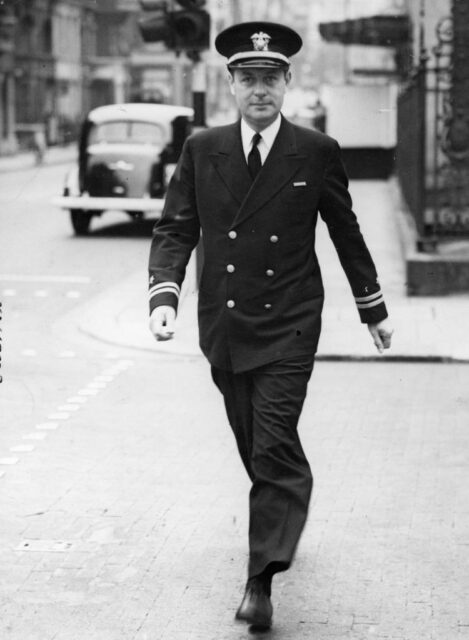
Even before the United States entered World War II, Robert Montgomery knew he wanted to do his part. He put his acting career on hold and traveled to Europe to volunteer his services as an ambulance driver with the American Field Service (AFS). From the fall of Paris to the Germans, up until the Dunkirk evacuations, he drove injured servicemen to Vouvray, in central France.
After a brief return to the US, during which he participated in a rally for the American Red Cross, Montgomery enlisted in the US Navy. Rising to the rank of lieutenant commander, he saw action in both the European and Pacific Theaters. He was aboard the destroyer USS Barton (DD-722) during the Allied landings at Normandy, being among the first to set foot in Cherbourg Harbor, and participated in action at the likes of Guadalcanal, Espiritu Santo, New Georgia and Noumea.
A complete summary of Montgomery’s service is as follows:
- Served on the staff of the commander of Destroyer Squadrons 5 and 60.
- Executive Officer (XO) of Motor Torpedo Boat 5 (PT-5).
- Assistant naval attaché at the US Embassy in London, United Kingdom, working in the Intelligence Section.
- Served aboard the light cruiser USS Columbia (CL-56).
- Commanding officer of PT-107.
For his service during the Second World War, Montgomery received the Bronze Star, the World War II Victory Medal, the European-African-Middle Eastern Campaign Medal and the Asiatic-Pacific Campaign Medal, among other decorations.
Return to Hollywood
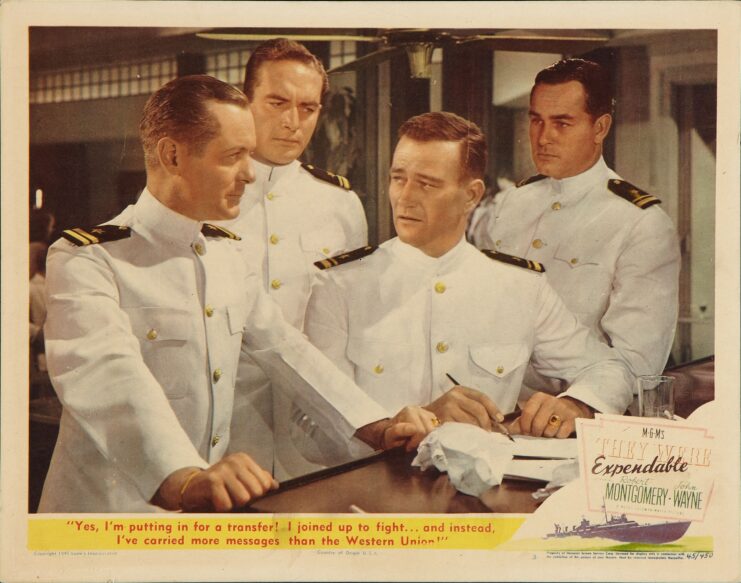
Upon his return to Hollywood, Robert Montgomery co-starred in They Were Expendable, alongside John Wayne and Donna Reed. He subsequently began his move into directing, with his first credited directorial feature being 1947’s Lady in the Lake.
As the years went on, Montgomery continued to act and direct, even hosting the Emmy Award-winning television series, Robert Montgomery Presents. His last on-screen appearance came in 1960’s The Gallant Hours, which starred James Cagney.
For his contributions to the entertainment industry, Montgomery received two stars on the Hollywood Walk of Fame: one for film and the other for TV.
Robert Montgomery worked with Dwight D. Eisenhower
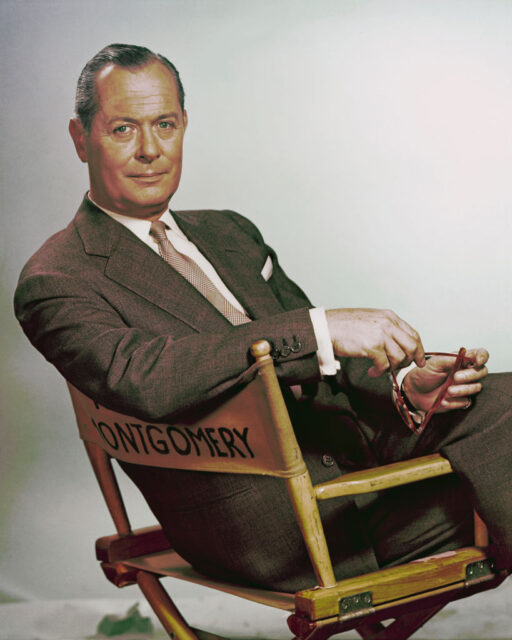
As with many working in Hollywood in the immediate aftermath of World War II, Robert Montgomery was concerned about any Communist influence, appearing as a “friendly witness” before the House Un-American Activities Committee (HCUA) in 1947.
Seven years later, the actor took on an unpaid role under Dwight D. Eisenhower, who’d recently become president of the United States. It was Montgomery’s task to ensure the commander-in-chief looked his best when addressing the American public.
More from us: Facts About ‘Das Boot’ – The Most Realistic Submarine Movie Ever Released
Are you a fan of all things ships and submarines? If so, subscribe to our Daily Warships newsletter!
On September 27, 1981, at the age of 77, Robert Montgomery passed away from cancer. His body was cremated and his ashes were given to his family.
